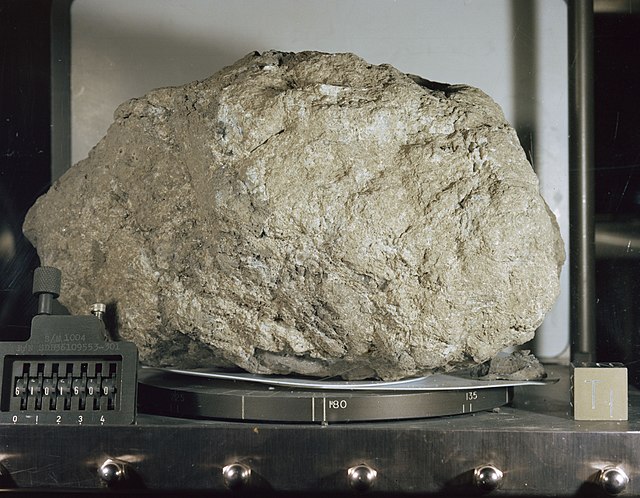The origin of the Moon is usually explained by a Mars-sized body striking the Earth, creating a debris ring that eventually collected into a single natural satellite, the Moon, but there are a number of variations on this giant-impact hypothesis, as well as alternative explanations, and research continues into how the Moon came to be formed. Other proposed scenarios include captured body, fission, formed together, planetesimal collisions, and collision theories.
The Moon's heavily cratered far-side
Lunar sample 61016, better known as "Big Muley"
Ancient rift valleys – rectangular structure (visible – topography – GRAIL gravity gradients) (October 1, 2014).
Ancient rift valleys – context.
The Moon is Earth's only natural satellite. It orbits at an average distance of 384,400 km (238,900 mi), about 30 times the diameter of Earth. Over time Earth's gravity has caused tidal locking, causing the same side of the Moon to always face Earth. Because of this, the lunar day and the lunar month are the same length, at 29.5 Earth days. The Moon's gravitational pull – and to a lesser extent, the Sun's – are the main drivers of Earth's tides.
Near side of the Moon, lunar north pole at top
Size comparison of the main moons of the Solar System with Earth to scale. Nineteen moons are large enough to be round, several having subsurface oceans and one, Titan, having a considerable atmosphere.
The thin lunar atmosphere is visible on the Moon's surface at sunrise and sunset with the lunar horizon glow and lunar twilight rays, like Earth's crepuscular rays. This Apollo 17 sketch depicts the glow and rays among the general zodiacal light.
Gene Cernan with lunar dust stuck on his suit. Lunar dust is highly abrasive and can cause damage to human lungs, nervous, and cardiovascular systems.








